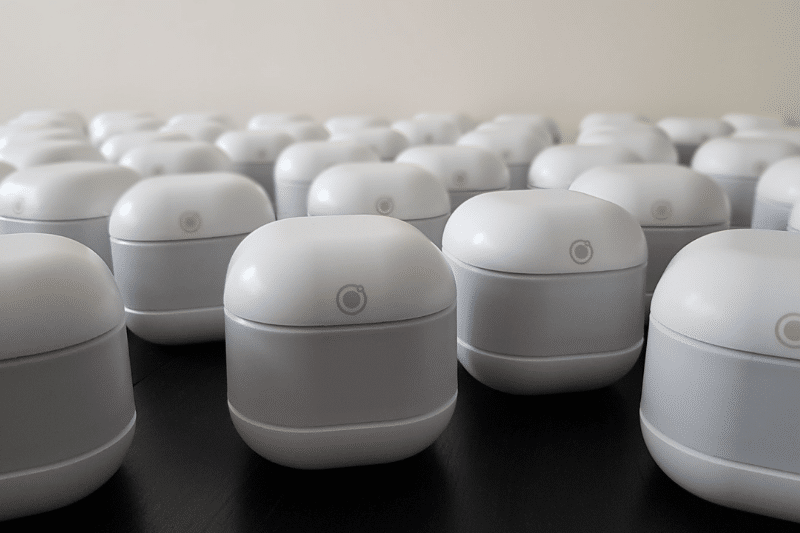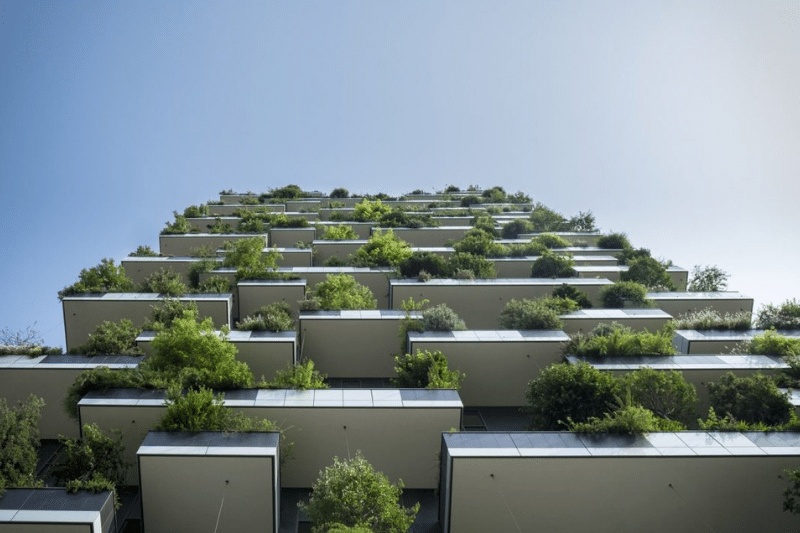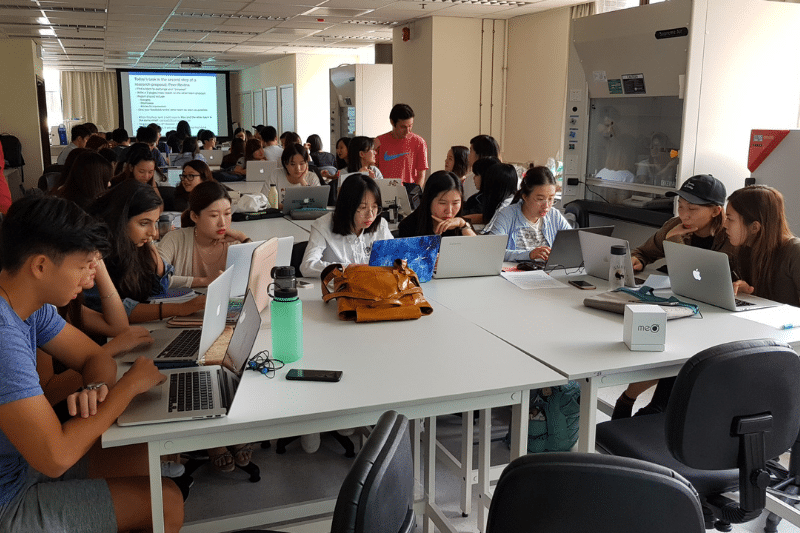We are experiencing an increased awareness of climate change globally, and the consequent impact of air pollution- but how often do we take indoor air quality into consideration? Meo air analytics conducts air monitoring and data collection to provide clean solutions, paving the way for energy efficient and smart technology.
Meo air analytics is a company that specialises in monitoring and analysing indoor air quality and providing solutions to reduce carbon dioxide levels in your space. Founded by Saketaram Soussilane in 2012 after his young son started to develop chronic asthma, Soussilane sought to diagnose the cause of the problem that would enable his son to live a happy life free of medication. When he could not find a plausible solution, he started meo air analytics to build a better air quality monitoring system.
Hive Life spoke with meo’s Chief Impact Officer, Michael Horman, to discuss the future of air analytics, smart buildings, and how indoor air quality can be improved in conjunction with sustainable practices.

Can you tell us more about meo air analytics?
We’re mainly focused on indoor air analytics. We take data, air quality information, and we analyse it in order to identify what the cause of the problem is, and provide solutions to that cause to create healthy, indoor working and living conditions. We are a B2B solution for corporations, building managers, schools, governments, etc.
My role at the moment is to look after the APAC business – strategy, sales, and supporting technology development from a commercial side.

How do you monitor and manage air quality to provide clean solutions?
We have a three-stage pathway for the way we work. The first is to collect the data to monitor. The second stage is the analysis, using a proprietary [Artificial Intelligence] system to analyse the flows, graph shape, and some other data to identify a likely cause- different pollutants cause different shapes and series of graphs.
The third part is to address the cause – the solution could be to open the windows, or to use the air conditioning system. Cleaning products are a common cause of indoor air pollution. The solution for that is to use greener, more healthy cleaning products, or to clean at 7am instead of 10am to give time for the pollutants to disperse before entering the space. The aim is to make the solutions as cost-effective and environmentally-friendly as possible.
We provide, through that pathway, physical monitors and a software system to assess the possible problems. The actual solution part varies. In some cases, one might need an air purifier, for example, which we do recommend to some clients.
What is the concept behind the meo mini?
We started with a monitor that measured a bunch of different things, which is still one of our marque products. The software we built onto that, because we needed to analyse the data, so we built the analytics system over a couple of years to really go into depth of making sense of the data.
The meo is a further development – it just measures the carbon dioxide. In France, schools must have carbon dioxide monitors for the indoor air quality issue, so it’s aimed at that market, but also all markets because it’s a very common problem. It’s key for assessing ventilation, which connects to the Covid-19 potential transmission risk associated with poor ventilation.
Where we want to take these products is to integrate them into building management systems to get a real smart building, and go deeper into the analytics and gather more data for increased accuracy and detail into causes of pollution and to illustrate the [air]flow within a space.

What are some examples of commonly poorly ventilated areas and the effects thereof?
One of the main ones that people probably don’t think about but feel, is meeting rooms, where the buildup of carbon dioxide can cause drowsiness and tiredness. Other main sources are printers and computers. If you have a printer right next to the desk, that’s quite bad for your health. Lastly, there’s cleaning products.
The symptoms of polluted air in the working environment can include drowsiness, headaches, fatigue, and loss of productivity. There are studies that show a significant impact on the ability of cognitive functions, like solving problems. There can be a 15% to even 50% impact on productivity with poor air quality.
This impact on productivity can affect potential profitability and the health impact is generally via exposure over a long period of time.
What is a smart building in regards to clean air monitoring?
That is definitely the direction that the real estate industry is heading. There are green building certifications such as LEED or BEAM, which recommend continuous monitoring of air pollution and indoor air quality, as well as other things, like energy usage, water usage, and so forth.
The first stage is to collect data, the second is analytics to understand the data, and the third is implementation.For buildings or cities to truly become ‘smart,’ then the solution also needs to be automated. Once you have the data, then something should happen in order to fix the problem automatically. We are looking to take our product and integrate it into building management systems.

Can the smart technology be integrated into existing structures or is it easier to build from the ground up?
The technology is available but the problem is that buildings have been built in a certain way and they last for a long time. You can’t knock down buildings because their energy management systems are not great.
The amount of energy used to build a new building is much more than you lose on the energy management system. This is an issue in Hong Kong and a challenge for us in our business. The ideal situation is that you have a building management system which can control and regulate the air quality in every room, every space, and certainly every floor.
Most older buildings don’t have that kind of control. It’s just one control temperature for the whole building. For a system to become truly smart, you want to control it space by space.
How large of a role does sustainability currently play in clean air management?
I would say not a lot – that’s my personal view. Most air quality management focuses on outdoor air because it’s visible.
The amount that’s focused on sustainability is definitely growing. Reducing energy usage is going to become a major driver in the next few years. You have the Hong Kong government’s green plan for reducing carbon dioxide. Building usage is a key part of their strategy and energy usage is one of the biggest carbon dioxide pollutants from this, so I think it will come more and more to the forefront.
We prefer to work on environmental sustainability in two ways. Firstly, more efficient energy usage and secondly, to put forward easy, cost-effective solutions, like changing cleaning products or opening windows, rather than pushing for options like buying an air purifier, which burns energy through both usage and production. Our approach is to promote solutions which will have zero impact on environment

How has Covid-19 played a role in your business operations?
There has been a significant increase in focus and spending around Covid-19 and the impact and awareness of indoor air quality. Where that’s been seen mostly is in the air purifier industry.
The way that Covid-19 is generally addressed is through ventilation. We know that Covid-19 is spread in spaces where there are a lot of people where the ventilation is poor.
For example, after the restaurant and gym incidents of early last year, the Hong Kong government brought in legislation to require restaurants to have a certain ventilation rate, so we can help organisations make sure they have appropriate ventilation and help them to measure it.
What kind of outreach and education do you do?
We do a lot of outreach with schools and universities like HKU and CUHK and other partners in the air quality space. We do talks, but also experiments. For example, we will give students monitoring devices and they can go and measure many different things. In the past we’ve gone to shopping centres in Hong Kong, measured, and compared data. It’s about seeing what impacts air pollution and which spaces might be good or bad.

What do you project will happen in regards to worldwide air quality?
Air quality is sort of a hidden problem. Rather, it was hidden, and now not so much. Worldwide, It’s one of the most significant killers – around four million people a year die from indoor air pollution, having contracted lung problems. A lot of that is not what we deal with – it’s rather, for example, kitchens in developing countries having poor ventilation, but it’s all part of the same story about awareness and taking action.
Long-term, the way I hope we can deal with this is by positioning ourselves via smart buildings – that in 10 years, we can have buildings to manage air quality automatically for us to solve the problems and do that in a very energy efficient way. We would be reducing both the outdoor and indoor impact. This would be more of a developed world solution, while in the developing world, there should be increasing focus on the pollutants that cause problems, via awareness, government action, as well as business action, getting people to invest in the health and environmental problems caused by pollution.
It’s key to have a long term plan to fix things, through leadership and people recognising and pushing for better air quality conditions.
What are meo’s plans for the future?
We operate both in Asia and in Europe, where there is much more push in terms of regulation around air quality, even though often the air quality there isn’t as bad. Air quality, like many environmental issues, is also a social issue, relating to health. Thus, we believe that more people will be focused on and interested in getting the best air quality. There’s a lot of opportunity in the air quality space. We also want to be part of the story about sustainability and using energy more efficiently.
Related Articles
Smart City Guide: 8 Key Features That Will Improve Society
8 Cleaning and Sanitizing Gadgets for Your Workspace
Carbon Offsets: Everything You Need to Know About the Corporate Sustainability Solution





